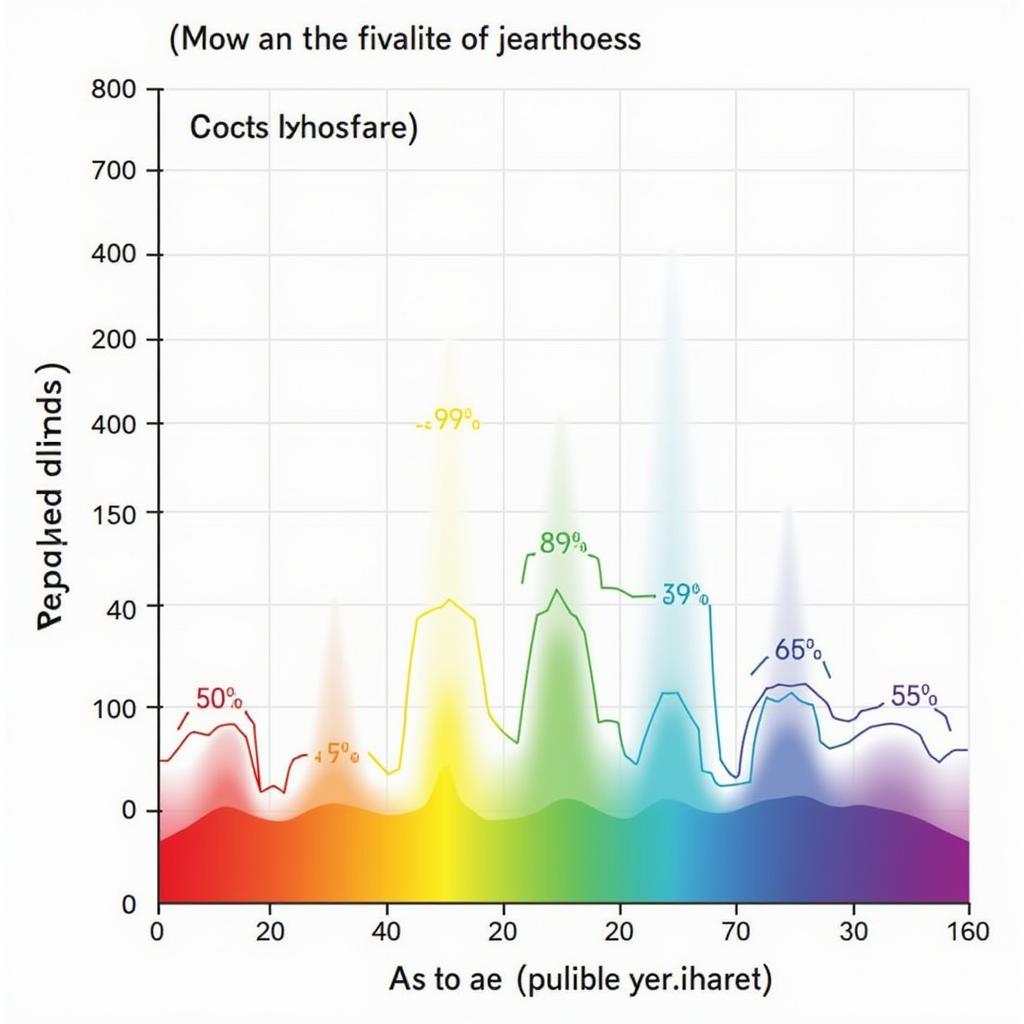Do men and women see color differently? It’s a common question, sparking debates and fueling countless online discussions. The science behind color perception reveals some fascinating insights into this age-old question.
The Science of Color Perception
The journey of color from the external world to our brain is a complex process. Light enters the eye, stimulating photoreceptor cells called rods and cones in the retina. Rods help us see in low light, while cones are responsible for color vision. There are three types of cones, each sensitive to a different range of wavelengths: short (blue), medium (green), and long (red). The signals from these cones are then processed by the brain, creating the vibrant tapestry of colors we perceive. So, where do the differences between men and women come in?
Genetic Variations on the X Chromosome
One key factor lies in genetics. Genes that code for color vision reside on the X chromosome. Women have two X chromosomes, while men have one X and one Y. This difference means that men are more susceptible to color vision deficiencies, often referred to as color blindness. These deficiencies typically involve difficulty distinguishing between reds and greens, and are much more prevalent in men. This genetic difference doesn’t necessarily mean women see more colors, but it does influence the likelihood of certain color perception variations. Similar to how what undertone do cool colors have, genetics can play a role in how individuals perceive specific hues.
 Men and Women Color Perception: The Role of Genetics
Men and Women Color Perception: The Role of Genetics
Hormonal Influences on Color Perception
Beyond genetics, hormonal influences might also play a role. Some studies suggest that fluctuations in female hormones throughout the menstrual cycle could subtly affect color perception. However, these findings are still preliminary and require further research. While hormonal factors might introduce nuances in color perception, the overall impact is likely less significant than genetic variations.
Do Women See More Shades of Red?
A popular notion is that women see more shades of red than men. While there isn’t definitive scientific evidence to support this claim universally, the idea stems from the fact that the red cone gene can exist in multiple forms. Some research indicates that women, with their two X chromosomes, have a higher chance of possessing variations in these red cone genes, potentially allowing them to perceive a broader range of reddish hues. This area of research is ongoing and fascinating. It’s similar to the way different individuals might perceive the colors of products like how many tshirt colors does sticker mule offer.
How Do Men See Color?
Men’s color vision is generally similar to women’s, but the higher prevalence of red-green color blindness in men shapes the overall picture. This doesn’t mean all men experience these deficiencies, but it’s a significant factor to consider. Men typically perceive the same basic colors as women, but variations within the red-green spectrum can be affected by genetic predispositions.
 Male Color Vision Spectrum: Similarities and Differences
Male Color Vision Spectrum: Similarities and Differences
Language and Color Perception
Interestingly, the language we use to describe color also influences our perception. Cultures with different color terms might categorize and perceive colors differently. While this doesn’t necessarily mean physiological differences in seeing color, it does affect how we process and interpret visual information. This linguistic influence is analogous to how humor is perceived, as in what is an off color joke. The context and cultural nuances shape our understanding and perception.
Do Men and Women Describe Colors Differently?
While men and women might use different terms to describe colors (think “cerulean” versus “sky blue”), these differences are primarily cultural and linguistic, not necessarily rooted in biological discrepancies in color perception.
Conclusion
So, do men and women see color differently? The answer is nuanced. While significant differences exist in the prevalence of color vision deficiencies due to genetic variations on the X chromosome, the basic mechanisms of color vision are largely the same. Hormonal influences and genetic variations might introduce subtle nuances, but more research is needed to fully understand these factors. Ultimately, color perception is a complex interplay of biology, genetics, and cultural influences. Understanding these factors helps us appreciate the fascinating world of color and how we each experience it uniquely. Just like understanding how does cranberry juice change the color of urine, exploring the science of color perception can be illuminating.
FAQ
- What is the most common type of color blindness? Red-green color blindness.
- Are women completely immune to color blindness? No, but it’s much less common.
- Do hormonal changes affect color vision? Possibly, but more research is needed.
- Does language influence how we perceive color? Yes, it can affect how we categorize and interpret colors.
- Do men and women see the same basic colors? Generally, yes, with the exception of those with color vision deficiencies.
- What are the three types of cones in the human eye? Short (blue), medium (green), and long (red).
- Why are color vision deficiencies more common in men? Because the genes responsible for color vision are on the X chromosome, and men only have one.
Can women use just for men hair color?
This question might seem related to color perception, but it actually pertains to hair dye formulations. can women use just for men hair color provides further information on this topic.
For support, contact us at 0373298888, [email protected] or visit us at 86 Cầu Giấy, Hà Nội. Our customer support team is available 24/7.

